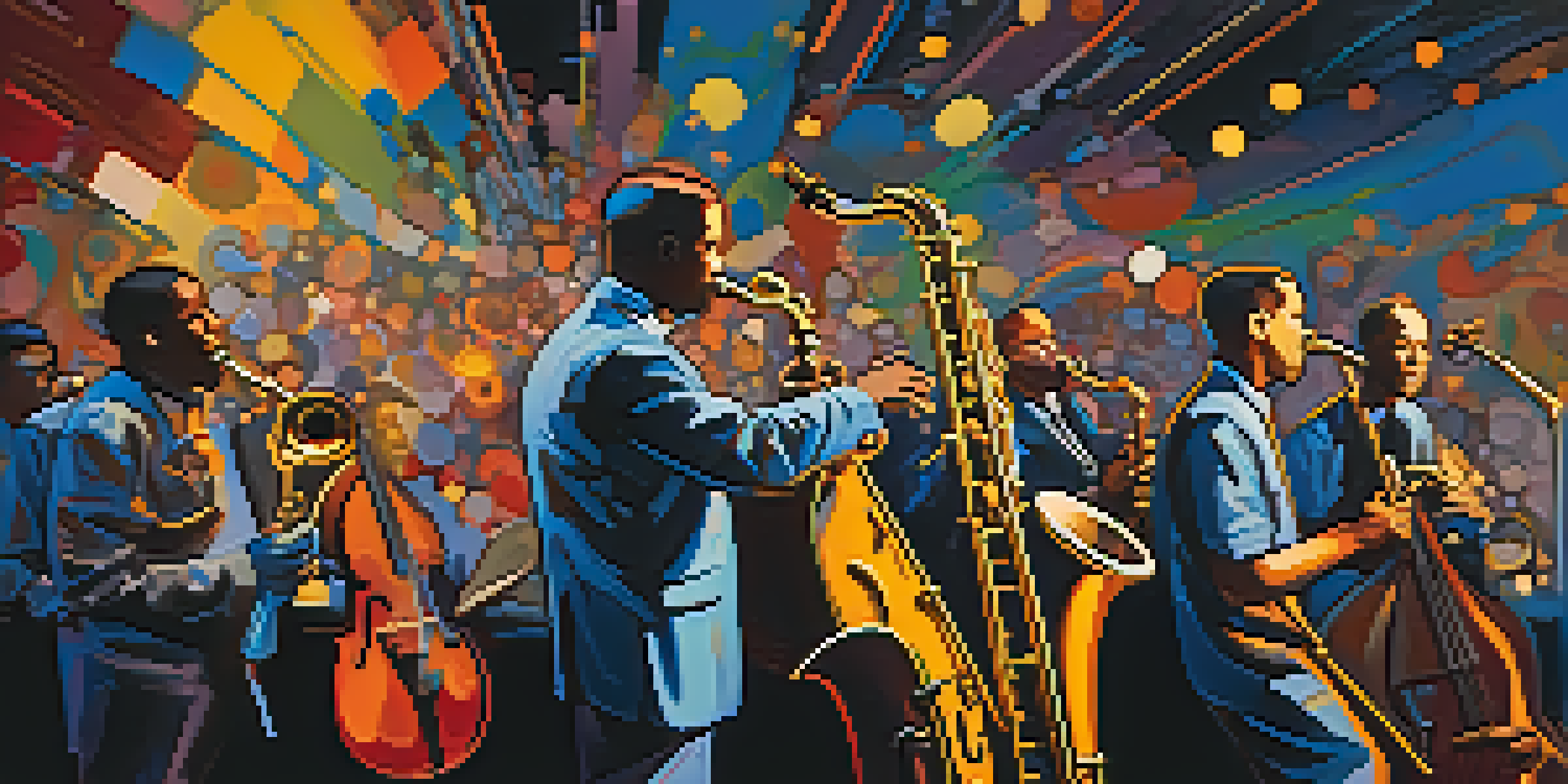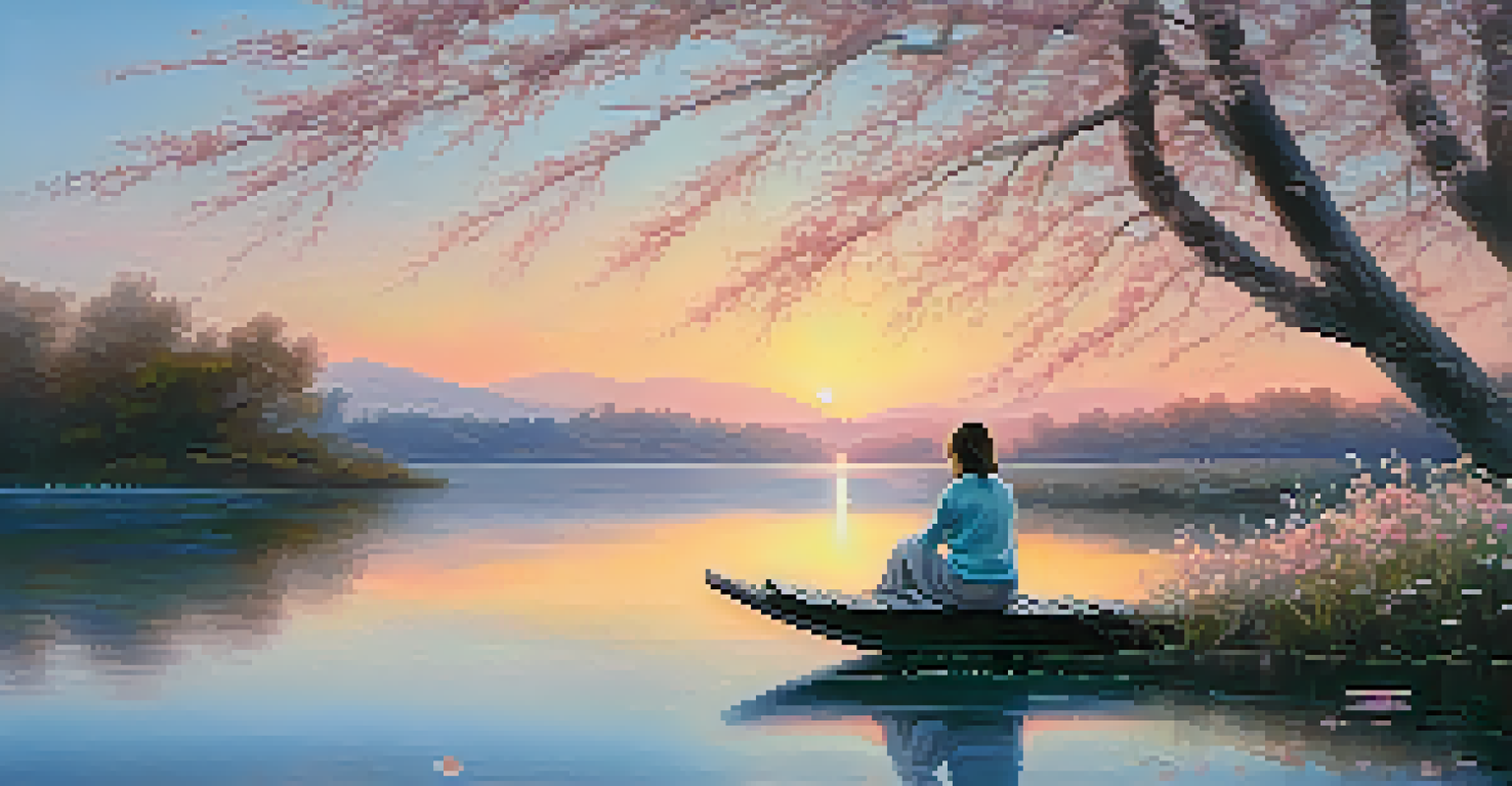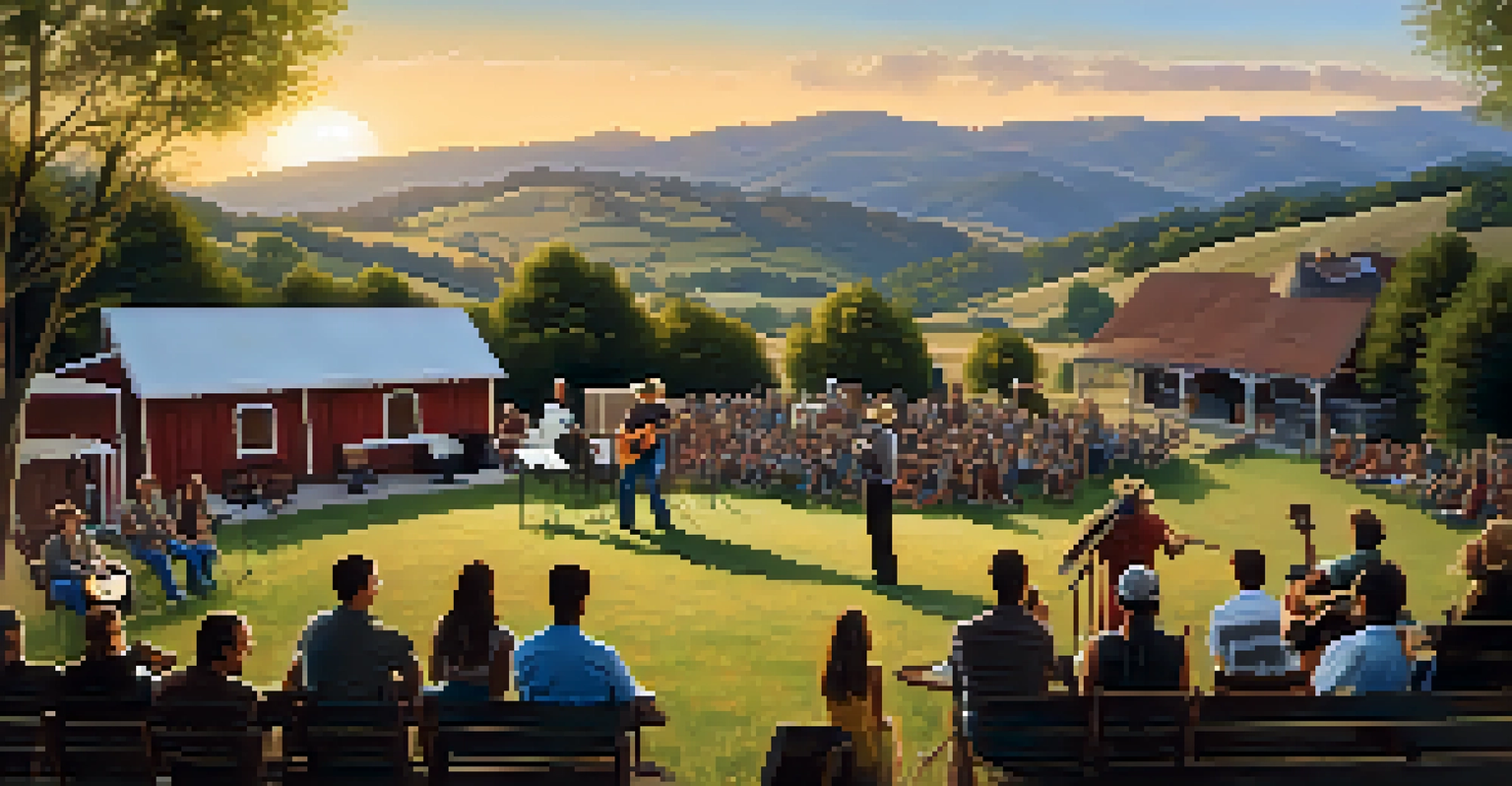Musical Genres and Their Corresponding Painting Movements

The Harmony of Classical Music and Baroque Art
Classical music, with its structured compositions and emotive power, finds a perfect companion in Baroque art. Both evoke grandeur and intricate detail, reflecting the historical context of the 17th and 18th centuries. Baroque paintings, like those of Caravaggio, often depict dramatic scenes with intense contrasts, mirroring the dynamic shifts in classical compositions.
Music can change the world because it can change people.
Just as a symphony unfolds with a variety of movements, Baroque art showcases a spectrum of emotions and narratives within a single frame. This interplay invites viewers to experience a sense of movement and rhythm, akin to listening to a symphony. The ornate decorations and elaborate techniques in Baroque paintings resonate with the complexity found in classical music.
Examples of this synergy can be seen in the works of composers like Bach, whose music often reflects the lavishness of Baroque art. Both art forms invite audiences to explore deeper meanings and emotional responses, creating a rich tapestry of human experience. As you delve into a Baroque painting, let the strains of classical music enhance your journey.
Romantic Music and the Emotional Depth of Impressionism
The Romantic era in music, characterized by expressive melodies and emotional depth, parallels the Impressionist movement in painting. Just as composers like Chopin used music to convey personal feelings, Impressionist artists like Monet captured fleeting moments and emotions through color and light. Both forms invite audiences to engage with the subtleties of mood and atmosphere.

Impressionist paintings often reflect the same passion and introspection found in Romantic music, where the focus is on individual perception. For instance, a Monet landscape can evoke the same feelings of nostalgia or longing that a piece by Liszt might inspire. This connection allows for a multi-sensory experience, where visual art and music enhance each other.
Art and Music Intertwined
Various music genres and art movements reflect and enhance each other's emotional depth and cultural narratives.
Moreover, the spontaneity of brush strokes in Impressionism mirrors the improvisational elements found in Romantic music. As you listen to a piece by Tchaikovsky, you can almost visualize the colors and movements in a corresponding Impressionist painting. This fusion of art forms encourages a deeper appreciation for both mediums.
Jazz's Free Spirit and the Abstract Expressionist Movement
Jazz music, known for its improvisational style and rhythmic complexity, aligns beautifully with the Abstract Expressionist movement. Artists like Jackson Pollock and Mark Rothko sought to express emotion through spontaneous brushwork and color, much like jazz musicians express themselves through improvisation. Both celebrate individuality and the freedom of expression.
Art is the most beautiful of all lies.
The vibrant energy of a live jazz performance can be likened to the dynamic forms found in Abstract Expressionism. Just as a jazz solo can change direction unexpectedly, so too can a painting in this genre challenge conventional forms. This unpredictability creates a sense of excitement in both art forms, captivating audiences in unique ways.
Furthermore, the emotional resonance in jazz parallels the feelings evoked by an abstract painting. When you listen to a soulful saxophone solo, you might picture swirling colors and forms that reflect your mood. This synergy highlights the deep emotional connections shared between music and visual art.
Folk Music and the Narrative Tradition in Folk Art
Folk music, with its storytelling roots, finds a natural partner in folk art. Both celebrate cultural heritage and community, often conveying shared experiences and values through relatable narratives. Just as folk songs tell tales of love, loss, and life, folk art captures these stories in vibrant, accessible forms.
The simplicity and authenticity of folk music resonate in the straightforward yet powerful imagery of folk art. Artists often use everyday materials and techniques to create works that reflect their communities, similar to how folk musicians draw from their lived experiences. This connection fosters a sense of belonging and continuity across generations.
Storytelling in Folk Traditions
Both folk music and folk art celebrate shared community stories, creating a powerful connection through relatable narratives.
Moreover, the communal aspect of both forms allows for a rich interactivity. When you gather around a fire to share songs, the accompanying folk art—be it quilts or pottery—enhances the experience. This celebration of shared traditions reminds us of the powerful bonds created through storytelling, whether through music or visual art.
Rock Music's Rebellion and the Energy of Pop Art
Rock music, often characterized by its rebellious spirit, aligns closely with the Pop Art movement that emerged in the mid-20th century. Artists like Andy Warhol and Roy Lichtenstein drew inspiration from popular culture, paralleling the themes of youth and defiance that rock music embodies. Both movements challenge traditional norms, making bold statements about society.
The vibrant colors and iconic imagery of Pop Art mirror the energetic and often provocative nature of rock music. Just as a rock concert electrifies an audience, Pop Art captures attention with its striking visuals and commentary on consumerism. This synergy creates an immersive experience that resonates with fans of both mediums.
Moreover, the connection between rock music and Pop Art can be felt in the way both forms often reflect cultural shifts. Classic rock anthems can evoke the same nostalgia as a Warhol print, reminding us of the social upheavals of their time. Together, they create a dialogue that continues to inspire new generations.
Electronic Music and the Futuristic Vibes of Digital Art
Electronic music, with its innovative sounds and futuristic aesthetic, aligns perfectly with the rise of digital art. Both embrace technology, pushing boundaries and exploring new creative frontiers. Just as electronic music evolves with advances in sound technology, digital art transforms with new software and tools.
The immersive experience of electronic music can be complemented by the dynamic visuals of digital art. Artists like Refik Anadol create stunning visualizations that respond to electronic beats, enhancing the sensory experience. This interplay between sound and sight creates a captivating environment for audiences.
Rebellion and Expression
Rock music and Pop Art both challenge societal norms, expressing youth and defiance through vibrant visuals and sound.
Furthermore, the abstract nature of both art forms allows for personal interpretation. Just as a piece of electronic music can evoke different feelings in listeners, digital art invites viewers to engage with their own perceptions and emotions. This synergy encourages a collaborative exploration of the future of creativity.
Hip-Hop's Storytelling and the Richness of Street Art
Hip-hop music, renowned for its powerful storytelling and cultural commentary, finds a vibrant counterpart in street art. Both forms serve as platforms for marginalized voices, expressing social issues and personal experiences in compelling ways. Just as a rap verse can convey a powerful narrative, street art transforms urban landscapes into storytelling canvases.
The visual impact of street art often echoes the boldness of hip-hop lyrics. Artists like Banksy use their work to provoke thought and inspire change, much like hip-hop artists address societal challenges through their music. This dynamic relationship invites audiences to engage with both art forms on a deeper level.

Moreover, the collaborative spirit of hip-hop culture is mirrored in the street art community, where artists often inspire and build upon one another's work. Whether it's a graffiti mural or a rap battle, both create an interactive dialogue that reflects the pulse of contemporary society. This synergy underscores the importance of art as a vehicle for change and expression.
The Connection Between Country Music and Regional Art Styles
Country music, deeply rooted in storytelling and regional culture, shares a strong bond with various regional art styles. Both forms celebrate the experiences and values of specific communities, often reflecting themes of love, heartbreak, and resilience. Just as a country song tells the story of everyday life, regional art captures the essence of local traditions.
The imagery found in folk and regional art often parallels the narratives expressed in country music, providing visual representations of the stories told in lyrics. Artists may depict rural landscapes or heartfelt moments, echoing the sentiments of songs by artists like Dolly Parton or Johnny Cash. This connection brings the stories to life in both sound and sight.
Furthermore, the communal aspect of country music, often performed at local gatherings, enhances the appreciation of regional art. When attending a country concert, the surrounding art—be it paintings or crafts—serves as a reminder of the culture and history that shape the music. This interplay fosters a sense of belonging and identity, celebrating the richness of both art forms.